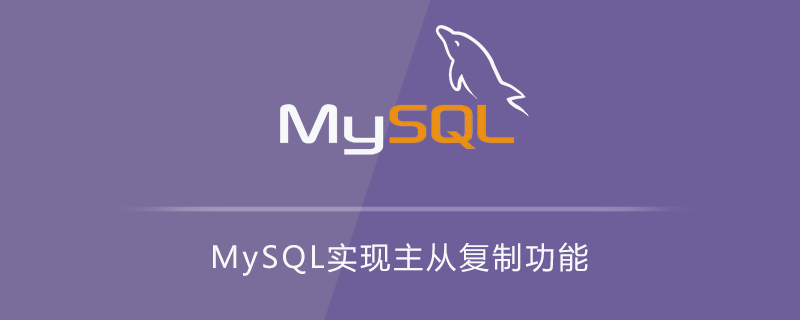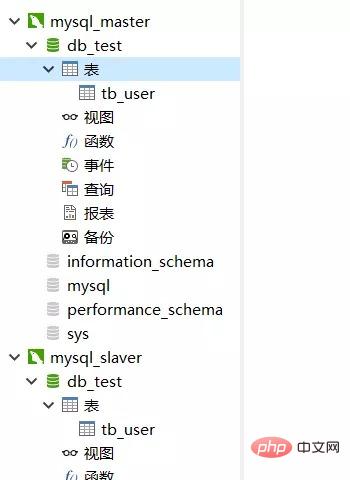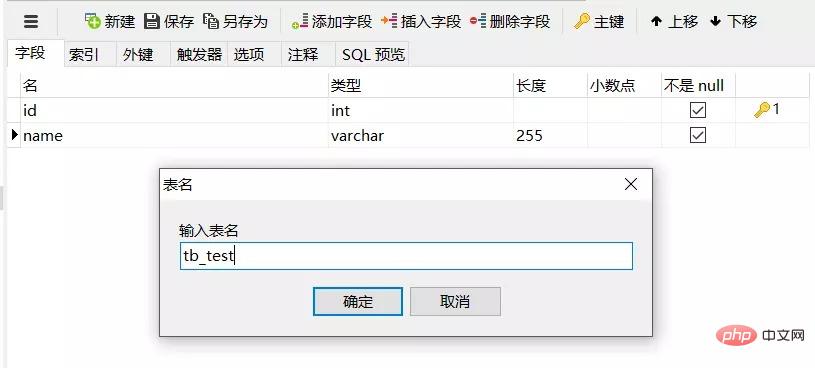MySQL implements master-slave replication function

Environment Description
centos7.3, MySQL5.7
Foreword
MySQL installation reference previous article https:// www.jianshu.com/p/452aa99c7476 has an explanation.
Basic Concepts
MySQL’s built-in replication capabilities are the foundation for building large-scale, high-performance applications. Distribute hundreds of millions of MySQL data to multiple systems. This distribution mechanism is achieved by copying the data of a certain MySQL host to other hosts (Slave) and executing it again. During replication one server acts as the server and one or more other servers act as slaves. The master writes updates to the binary log and maintains an index of the files to track log rotation. These logs record updates sent to slave servers. When a slave connects to the master, it notifies the master of the location of the last successful update the slave read in the log, the slave receives any updates that have occurred since then, then blocks, etc. The master notifies new updates. . Please note that when you replicate, all updates to the replicating tables must be made on the master server. Otherwise, you must be careful to avoid conflicts between updates made by users to tables on the master server and updates to tables on the server
Master-slave replication implementation
一, Modify the master server
If you installed MySQL according to the article I wrote, then the my.cnf configuration file is in the /etc/ directory. If it is not there, you can search it through the whereis command. Add the following configuration under the my.cnf configuration file
server_id=1 #指定MySQL的id log-bin=mysql-bin #开启二进制日志文件
2. Create a replication account
Execute this command in the main server (all are allowed here Address access, it is recommended to set it to the address of the slave server)
GRANT REPLICATION SLAVE ON *.* to 'replication'@'%' identified by 'Abc123...';
Three. Modify the slave server
server_id=2 log-bin=mysql-bin binlog_do_db=db_test#表示要同步的数据库
Instructions: binlog-ignore-db=test means unsynchronized test database binlog_do_db=db_test #Indicates the database to be synchronized
4. Restart MySQL
Restart both the master server and the slave server
service mysqld restart
5. Check the status of the master server
show master status
Results As follows:
Some information needs to be recorded here, which needs to be used when configuring the slave server# 6. Configure the slave server (connect to the Master server)
change master to master_host='192.168.74.129',master_user='replication',master_password='Abc123...',master_log_file='mysql-bin.000001',master_log_pos=2041;
master_host is the ip of the master server master_port=3306 (There is no configuration here, the default is 3306) master_user: Master server authorized user, that is, the user created before Master master_password: Master server authorized user corresponding password master_log_file: Master binlog file name master_log_pos: Postion value in Master binlog file about position value , here is a note: If the master server already has a lot of data, you first need to back up the data of the master server to the slave server, and then use the show master status command to record the location where synchronization needs to be started. # 7. Start replication and execute
start slave
on the slave server. The stop command is: stop slave; The two circled results are yes, indicating that the master-slave replication configuration is successful. If the configuration fails, you can check the failure information in the MySQL log file, or you can check a brief error message through the above command:

This is the master-slave server I just configured The main reason for the error is that the UUID of the MySQL server conflicts. The reason is that my slave server is copied from the master server. Just go to /var/lib/mysql/auto.cnf and modify it. #Verify the current status of the master-slave results:

#View the slave server

You can see that it has been synchronized and synchronized in the past
For more MySQL related technical articles, please visit the MySQL Tutorial column to learn!
The above is the detailed content of MySQL implements master-slave replication function. For more information, please follow other related articles on the PHP Chinese website!

Hot AI Tools

Undresser.AI Undress
AI-powered app for creating realistic nude photos

AI Clothes Remover
Online AI tool for removing clothes from photos.

Undress AI Tool
Undress images for free

Clothoff.io
AI clothes remover

Video Face Swap
Swap faces in any video effortlessly with our completely free AI face swap tool!

Hot Article

Hot Tools

Notepad++7.3.1
Easy-to-use and free code editor

SublimeText3 Chinese version
Chinese version, very easy to use

Zend Studio 13.0.1
Powerful PHP integrated development environment

Dreamweaver CS6
Visual web development tools

SublimeText3 Mac version
God-level code editing software (SublimeText3)

Hot Topics
 1664
1664
 14
14
 1423
1423
 52
52
 1318
1318
 25
25
 1269
1269
 29
29
 1248
1248
 24
24
 MySQL's Role: Databases in Web Applications
Apr 17, 2025 am 12:23 AM
MySQL's Role: Databases in Web Applications
Apr 17, 2025 am 12:23 AM
The main role of MySQL in web applications is to store and manage data. 1.MySQL efficiently processes user information, product catalogs, transaction records and other data. 2. Through SQL query, developers can extract information from the database to generate dynamic content. 3.MySQL works based on the client-server model to ensure acceptable query speed.
 Laravel Introduction Example
Apr 18, 2025 pm 12:45 PM
Laravel Introduction Example
Apr 18, 2025 pm 12:45 PM
Laravel is a PHP framework for easy building of web applications. It provides a range of powerful features including: Installation: Install the Laravel CLI globally with Composer and create applications in the project directory. Routing: Define the relationship between the URL and the handler in routes/web.php. View: Create a view in resources/views to render the application's interface. Database Integration: Provides out-of-the-box integration with databases such as MySQL and uses migration to create and modify tables. Model and Controller: The model represents the database entity and the controller processes HTTP requests.
 MySQL and phpMyAdmin: Core Features and Functions
Apr 22, 2025 am 12:12 AM
MySQL and phpMyAdmin: Core Features and Functions
Apr 22, 2025 am 12:12 AM
MySQL and phpMyAdmin are powerful database management tools. 1) MySQL is used to create databases and tables, and to execute DML and SQL queries. 2) phpMyAdmin provides an intuitive interface for database management, table structure management, data operations and user permission management.
 MySQL vs. Other Programming Languages: A Comparison
Apr 19, 2025 am 12:22 AM
MySQL vs. Other Programming Languages: A Comparison
Apr 19, 2025 am 12:22 AM
Compared with other programming languages, MySQL is mainly used to store and manage data, while other languages such as Python, Java, and C are used for logical processing and application development. MySQL is known for its high performance, scalability and cross-platform support, suitable for data management needs, while other languages have advantages in their respective fields such as data analytics, enterprise applications, and system programming.
 Solve database connection problem: a practical case of using minii/db library
Apr 18, 2025 am 07:09 AM
Solve database connection problem: a practical case of using minii/db library
Apr 18, 2025 am 07:09 AM
I encountered a tricky problem when developing a small application: the need to quickly integrate a lightweight database operation library. After trying multiple libraries, I found that they either have too much functionality or are not very compatible. Eventually, I found minii/db, a simplified version based on Yii2 that solved my problem perfectly.
 Laravel framework installation method
Apr 18, 2025 pm 12:54 PM
Laravel framework installation method
Apr 18, 2025 pm 12:54 PM
Article summary: This article provides detailed step-by-step instructions to guide readers on how to easily install the Laravel framework. Laravel is a powerful PHP framework that speeds up the development process of web applications. This tutorial covers the installation process from system requirements to configuring databases and setting up routing. By following these steps, readers can quickly and efficiently lay a solid foundation for their Laravel project.
 MySQL for Beginners: Getting Started with Database Management
Apr 18, 2025 am 12:10 AM
MySQL for Beginners: Getting Started with Database Management
Apr 18, 2025 am 12:10 AM
The basic operations of MySQL include creating databases, tables, and using SQL to perform CRUD operations on data. 1. Create a database: CREATEDATABASEmy_first_db; 2. Create a table: CREATETABLEbooks(idINTAUTO_INCREMENTPRIMARYKEY, titleVARCHAR(100)NOTNULL, authorVARCHAR(100)NOTNULL, published_yearINT); 3. Insert data: INSERTINTObooks(title, author, published_year)VA
 Solve MySQL mode problem: The experience of using the TheliaMySQLModesChecker module
Apr 18, 2025 am 08:42 AM
Solve MySQL mode problem: The experience of using the TheliaMySQLModesChecker module
Apr 18, 2025 am 08:42 AM
When developing an e-commerce website using Thelia, I encountered a tricky problem: MySQL mode is not set properly, causing some features to not function properly. After some exploration, I found a module called TheliaMySQLModesChecker, which is able to automatically fix the MySQL pattern required by Thelia, completely solving my troubles.




